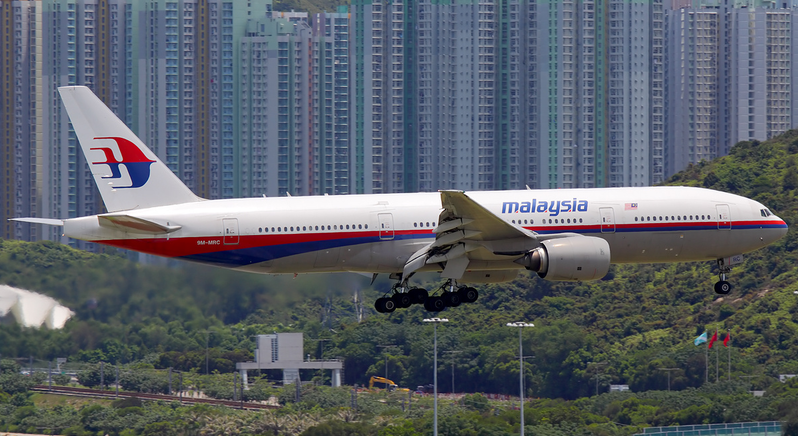The disappearance of the Malaysia Airlines 370 flight has been on most international news’ headlines for over three weeks now. The airplane, scheduled to travel from Kuala Lumpur to Beijing, vanished in the Gulf of Thailand on March 8. Since then, the search to find out its whereabouts has proven to be an extremely confusing and complicated operation. Every day satellites keep reporting possible debris, and every night their connection to the incident is discarded. The Chinese and Malaysian governments have also failed to address the issue accurately, and mixed messages have been delivered several times to the media. Frustrated relatives of the passengers have protested against the authorities’ inefficiency, misinformation and lack of tact. The fact that Malaysia Airlines notified them via text message that the plane had definitely crashed into the ocean illustrates their indignation.
While the government has declared that there is no possibility of survivors, the causes of the accident remain unknown. Highjacking, suicide and machinery malfunction are all being considered, enhancing the uncertainty of the international community. Moreover, considering that the zone being searched for debris has been recently “narrowed down” to a 31,000 square mile area (about the size of Austria), it is hard to argue that the investigation of MH370 has delivered significant results.
It is a difficult position for all parties involved. Government authorities have been strongly criticized for their incompetence, and the pressure to find the airplane is increasing exponentially, as weeks pass by. The passengers’ relatives have had to bear with the uncertainty, and while some have started mourning their losses, some others are still hopeful that their loved ones landed somewhere remote. Malaysia Airlines and the airport authorities are also in a tense situation, for they will need to find the black box in order to know if there is some kind of structural defect in the Boeing 777.
Nonetheless, the biggest losers on this issue are the pilots’ families. Not only have they suffered the emotional rollercoaster that the rest of the relatives have been through, but they have also had to confront the suspicions from authorities and media alike. For the past weeks, Captain Zaharie Ahmad Shah has been accused of leading the 238 passengers to their deaths by highjacking his own plane. Similarly, co-pilot Fariq Abdul Hamid (27) has been presented by the media as a “reckless flirt”, after having invited a couple of women to see the pilot’s cabin in 2011.
Regarding the 53-year-old captain’s case, the investigations following the plane’s disappearance have been uncomfortably thorough: his house has been searched, his marriage problems publicized and his love affair with another woman uncovered. Furthermore, the fact that Shah owned a flight simulator at home has led to numerous speculations about whether or not he planned the highjacking there. Owning a flight simulator is nothing unusual for pilots, and the FBI has already declared that there was nothing sinister about the information retrieved from the simulator.
Most recently, Shah has been labeled as a fanatic follower of the “radical opposition” of Malaysia. The picture of him wearing a T-shirt that reads “democracy is dead” has circled the Internet worldwide, and his distant family ties to opposition leader Ibrahim Anwar have been consistently addressed by the sensationalist media. According to some speculations, Shah decided to highjack the plane as retaliation to the fact that Anwar received that same day five years of prison, under the charge of sodomy.
Such scandalous rumors, while definitely adding to the media fascination with the airplane mystery, pose a very serious problem regarding the way in which journalists have portrayed these two men. While it is understandable, given the circumstances, that the pilots are investigated, it is important to evaluate how these narratives have evolved. For instance, the fact that audio records show that nothing unusual was said in the pilot’s cabin that night has been largely omitted in most reports. Similarly, it seems to be irrelevant that the pilots did not request to be put in the same flight, or that Shah had been member of Malaysia Airlines for 32 years and Hamid for 14. Most alarming is that the theory of Shah highjacking the plane as a consequence of Anwar’s conviction was welcomed by reporters, even though it is completely unfounded.
It is upsetting to see how the international media has exploited the personal lives of Shah and Hamid. It seems that journalists are more interested in revealing the possible troubles that could have led the two pilots to highjack the plane than considering the factual development of the events. The reasons behind the disappearance of MH370 are certainly worth the most exhaustive investigations of the pilots, passengers and machinery. Hopefully the continuing research efforts will provide useful answers soon and this tragic enigma will be solved. Admittedly, the fact that the airplane was programmed to change direction even before it lost contact with the airport towers may indicate that at least one of the pilots is guilty. However, so far there are more questions than answers, and several countries are cooperating to clarify the events. In the meantime, it is not only confusing but also disrespectful to speculate gratuitously about the pilots’ agendas. It would not hurt to remember that everyone is innocent until proven otherwise.
